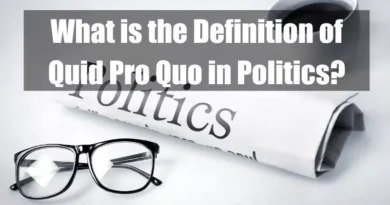Educational Quid Pro Quo Harassment
Takeaways
| Key Points |
|---|
| Quid Pro Quo harassment in education refers to situations where someone in a position of authority, such as a teacher, professor, or administrator, demands sexual favors from a student in exchange for academic benefits like grades, recommendations, or other opportunities. |
| This form of harassment is particularly harmful due to the power imbalance in educational settings, where educators and administrators significantly influence students’ academic success, making coercion a central element of the issue. |
| Title IX of the Education Amendments of 1972 prohibits such harassment in institutions that receive federal funding, requiring schools to prevent and respond to these incidents. |
| Quid pro quo harassment can occur not only in student-teacher dynamics but also through administrative or staff-student interactions, where students may be forced to comply to gain access to essential educational resources or opportunities. |
| Additionally, peer-to-peer harassment, though less common, can also occur in environments where one student holds power over others, such as in student leadership roles or on athletic teams, making it crucial to address all forms of this abuse to maintain a safe and non-discriminatory academic environment. |
Introduction to Educational Quid Pro Quo Harassment
Definition of Quid Pro Quo Harassment in Education
Quid pro quo harassment in education occurs when someone in authority, such as a teacher, professor, or administrator, demands sexual favors from a student in return for academic benefits or other advantages. These benefits include better grades, positive recommendations, or privileged access to opportunities.
The key element of this harassment is the coercion involved, where a student’s academic future or success is tied to complying with unwanted sexual advances. Title IX, a U.S. federal law, prohibits such discriminatory practices in educational institutions that receive federal funding.
Distinguishing Features of Educational Quid Pro Quo Harassment
This form of harassment is distinct because it leverages the significant power imbalance inherent in educational settings. Educators and administrators substantially influence students’ academic success, making this harassment particularly harmful.
The coercive nature of quid pro quo harassment means students may feel pressured to comply to avoid negative consequences such as poor grades or limited access to academic resources. Furthermore, the fear of retaliation or disbelief often discourages students from reporting such incidents.
Legal Framework: Title IX and Educational Settings
Title IX of the Education Amendments of 1972 is the primary legal framework addressing quid pro quo harassment in educational environments. It prohibits sex-based discrimination in any educational program or activity that receives federal financial assistance.
Under Title IX, schools are required to prevent and respond to sexual harassment, including quid pro quo situations where educational benefits are conditioned on the acceptance of sexual advances.
The U.S. Department of Education’s Office for Civil Rights (OCR) enforces Title IX, requiring educational institutions to implement policies and procedures that address and prevent quid pro quo harassment. Institutions failing to comply with Title IX can face severe penalties, including losing federal funding.
The latest Title IX regulations emphasize the need for prompt and effective responses to harassment allegations to ensure a safe and non-discriminatory educational environment.
Types and Examples of Educational Quid Pro Quo Harassment
Student-Teacher Dynamics: Power Imbalance in Academia
In educational settings, quid pro quo harassment often occurs within the student-teacher relationship. Teachers and professors hold considerable authority over students, especially regarding grades, recommendations, and academic progression.
This power can be misused when a teacher conditions a student’s academic success on their submission to sexual advances. For instance, a teacher might promise a higher grade or a favorable evaluation in exchange for sexual favors, placing the student in a difficult and coercive situation.
Administrative and Staff-Student Interactions
Quid pro quo harassment is not limited to student-teacher dynamics; it can also involve other school staff or administrators. For example, an academic advisor or department head might misuse their position to solicit sexual favors in exchange for academic benefits such as course enrollment, approval of special requests, or access to important resources.
These situations are particularly damaging because they affect students’ access to necessary educational support and services.
Peer-to-Peer Quid Pro Quo Harassment
Quid pro quo harassment can occur between students, though it is less common than other forms. This type of harassment is more likely when one student holds a position of power or influence over another, such as in student leadership roles or within influential peer groups like student organizations, athletic teams, or other group settings. For instance, a student leader might exploit their influence by offering to secure better opportunities or resources in exchange for sexual favors.
Although these cases are less visible and less frequently documented, they are equally harmful and contribute significantly to a hostile educational environment.
Legal Precedents and Landmark Cases
Overview of Key Legal Cases in Educational Quid Pro Quo Harassment
Several landmark legal cases have defined the responsibilities of educational institutions regarding quid pro quo harassment. One such case is Gebser v. Lago Vista Independent School District (1998), where the U.S. Supreme Court ruled that a school district could be held liable for a teacher’s sexual harassment of a student only if a school official with the authority to address the harassment had actual knowledge of it and responded with deliberate indifference.
This case highlighted the importance of having effective reporting mechanisms and institutional accountability.
Impact of Legal Decisions on Current Educational Policies
These legal precedents have significantly influenced how educational institutions address quid pro quo harassment. Schools are now required to implement comprehensive reporting and response procedures, including the appointment of Title IX coordinators responsible for ensuring compliance with federal regulations.
Additionally, institutions must provide training to staff and students to help them recognize and report instances of harassment.
Recent updates to Title IX regulations have clarified educational institutions’ responsibilities in handling quid pro quo harassment. Schools are required to respond promptly to any notice of harassment, whether the complaint is formal or informal, to prevent further harm and ensure a safe learning environment.
This approach emphasizes the importance of proactive measures to prevent harassment and protect students’ rights.
Institutional Responsibilities under Title IX
Obligations of Educational Institutions to Prevent Quid Pro Quo Harassment
Under Title IX, educational institutions have a legal duty to prevent quid pro quo harassment and respond effectively when it occurs. This includes establishing clear policies that define quid pro quo harassment and outline the consequences for those found guilty of such conduct. Institutions must also ensure that all employees, particularly those in positions of authority, are trained to recognize and report harassment.
Furthermore, schools must create an environment where students feel safe to report harassment without fear of retaliation. This involves providing accessible reporting channels, offering supportive measures to victims, taking all complaints seriously, and investigating them thoroughly.
Reporting Procedures: What Institutions Must Do Upon Receiving Complaints
Upon receiving a complaint of quid pro quo harassment, an educational institution must take immediate and appropriate action. This begins with offering supportive measures to the complainant, such as academic accommodations, changes in class schedules, or access to counseling services.
The institution must then conduct a prompt and impartial investigation to determine whether quid pro quo harassment occurred. This investigation should include interviews with all relevant parties and the collection of supporting evidence.
The findings must be documented, and the complainant and the respondent should be informed of the outcome and any disciplinary actions taken.
Compliance Requirements and Institutional Accountability
Compliance with Title IX is mandatory for educational institutions that receive federal funding. Non-compliance can result in severe consequences, including losing federal financial assistance.
To ensure compliance, institutions must regularly review and update their policies and procedures related to quid pro quo harassment. This includes conducting regular training sessions for staff and students, monitoring the effectiveness of reporting and response mechanisms, and making necessary adjustments based on feedback and legal developments.
Institutions are also required to keep detailed records of all complaints and investigations and any actions taken in response to findings of quid pro quo harassment.
These records are crucial for demonstrating compliance during an audit or legal challenge.
Impact on Victims and Educational Outcomes
Psychological and Emotional Consequences for Students
Quid pro quo harassment can have devastating psychological and emotional effects on victims. The coercive nature of this harassment can lead to feelings of shame, guilt, and helplessness. Victims often experience anxiety, depression, and other mental health issues as a result of the trauma.
The power dynamics in educational settings can exacerbate these effects, as students may feel isolated and unsupported, particularly if the harasser is a trusted authority figure like a teacher or professor.
Academic Impacts and Long-term Career Effects
The academic consequences of quid pro quo harassment can be severe and long-lasting. Victims may struggle to concentrate on their studies, leading to declining grades and academic performance.
Sometimes, students may feel compelled to withdraw from courses or leave the institution entirely to escape the harassment. These disruptions can have long-term effects on a student’s educational trajectory and career prospects, limiting their opportunities for success in the future.
Social and Environmental Factors Contributing to Harassment in Education
Several social and environmental factors contribute to quid pro quo harassment in educational settings. These include institutional cultures that tolerate or downplay harassment, a lack of awareness or understanding of what constitutes quid pro quo harassment, and inadequate support systems for victims.
Additionally, societal attitudes that minimize the seriousness of sexual harassment or blame victims can discourage reporting and perpetuate a culture of silence around the issue.
Investigative Procedures and Institutional Responses
Steps for Investigating Quid Pro Quo Harassment:
Investigating quid pro quo harassment involves an initial assessment to determine the complaint’s severity and nature. Immediate supportive measures, such as schedule adjustments or counseling, may be provided to the complainant.
The formal investigation includes interviews with the complainant, respondent, and witnesses and the collection of evidence such as emails or text messages. Investigators must remain impartial and ensure fairness throughout the process.
The findings are compiled into a report that determines whether harassment occurred and what actions should follow.
Role of Title IX Coordinators and Campus Authorities:
Title IX coordinators oversee the investigation, ensuring compliance with Title IX regulations and supporting the complainant and respondent. Campus authorities, including administrators and legal counsel, may be involved in making decisions based on the investigation’s findings. Their role is to ensure the institution’s response is appropriate, legally sound, and harassment-free.
Informal Resolution vs. Formal Investigation:
Institutions may offer an informal resolution as an alternative to a formal investigation. This process, which might include mediation or a negotiated agreement, allows both parties to resolve the issue without a lengthy investigation. It is quicker and less adversarial but is only suitable if both parties agree and the allegations are not severe. The informal process must ensure fairness and protect the complainant’s rights.
Preventive Measures and Educational Programs
Training and Awareness Programs for Faculty, Staff, and Students:
Preventing quid pro quo harassment requires proactive measures, including comprehensive training and awareness programs. These programs educate participants on what constitutes harassment, the power dynamics involved, and the consequences for both victims and perpetrators.
Training should be mandatory and regularly updated to reflect legal requirements and institutional policy changes. Faculty and staff must be trained to recognize harassment, understand their responsibilities under Title IX, and respond appropriately to complaints.
Students should know their rights, how to report harassment, and the resources available.
Development of Supportive Measures and Safe Reporting Channels:
Institutions must maintain supportive measures for those experiencing harassment, such as academic accommodations, mental health support, and options to avoid contact with the harasser. Safe and accessible reporting channels are essential, with multiple avenues for reporting, including anonymous options.
These channels must be communicated to the campus community to ensure students feel comfortable reporting harassment.
Best Practices for Creating a Safe Educational Environment:
Creating a safe, educational environment involves enforcing policies, conducting regular training, and fostering a culture that does not tolerate harassment. Best practices include regular climate surveys to assess harassment prevalence, implementing clear procedures for handling complaints, and ensuring everyone understands the consequences.
Institutions should promote a culture of respect and inclusion, upholding the dignity of every individual.
Challenges in Addressing Educational Quid Pro Quo Harassment
Victims are often reluctant to report harassment due to fear of retaliation or disbelief. Institutions must build trust with students, ensuring complaints are taken seriously and handled confidentially.
Investigations must be thorough and timely. Delays can worsen harm to victims and hinder academic progress. Institutions must balance the need for careful investigation with prompt response.
Addressing deeply embedded cultural and systemic issues that allow harassment to occur is complex. This requires ongoing efforts to change attitudes, educate the campus community, and hold individuals accountable.
Policy Development and Implementation Strategies
Effective policies are crucial for preventing and addressing quid pro quo harassment. Policies must clearly define harassment, outline procedures for reporting and investigation, and specify consequences for violations. Policies should be easily accessible and regularly reviewed for relevance and effectiveness.
Institutions must align their policies with Title IX requirements, including having a designated Title IX coordinator, providing training on obligations, and protecting the rights of complainants and respondents throughout the investigation. Continuous monitoring and evaluation are necessary to ensure compliance and address gaps in the institution’s response to harassment.
Due to the evolving legal landscape surrounding quid pro quo harassment, regular policy reviews and updates are essential. This involves consulting legal experts, conducting internal audits of harassment cases, and gathering campus community feedback to ensure compliance with federal regulations and responsiveness to the needs of students and staff.
Conclusion
Educational quid pro quo harassment has profound effects on victims and the educational environment. Understanding the dynamics of power, legal frameworks, and proactive measures allows institutions to create safer environments.
Ensuring Title IX compliance, providing adequate training, and fostering a culture of respect are essential steps in combating harassment and upholding the integrity of educational institutions.
FAQ
What constitutes “unwelcome conduct” in educational quid pro quo harassment?
Unwelcome conduct refers to behavior that a student did not solicit or invite and regards as undesirable or offensive. In quid pro quo harassment, this can include unwelcome sexual advances, requests for sexual favors, or other verbal or physical conduct of a sexual nature by someone in a position of authority.
How does faculty and students’ “power imbalance” influence quid pro quo harassment cases?
The inherent power imbalance, where faculty hold authority over students’ grades, recommendations, or academic opportunities, can pressure students into acquiescing to unwelcome demands. This imbalance is central to quid pro quo harassment, as the authority figure leverages their position to elicit sexual favors in exchange for academic benefits.
Are “explicit threats” necessary to prove quid pro quo harassment in educational settings?
No, explicit threats are not necessary. Even implicit conditioning of academic benefits on submission to sexual conduct can constitute quid pro quo harassment. For instance, suggesting that a student’s grade could improve with certain “favors” implies a quid pro quo arrangement, even without direct threats.
How does “constructive knowledge” impact an institution’s liability in quid pro quo harassment cases?
Constructive knowledge implies that an institution should have known about the harassment, even if it wasn’t directly reported. If a school’s administration reasonably should have been aware of the misconduct and failed to act, the institution can be held liable for failing to prevent or address the harassment.
What role does “respondeat superior” play in educational quid pro quo harassment cases?
Under the doctrine of respondeat superior, an educational institution can be held liable for the actions of its employees if those actions occur within the scope of their employment. If a faculty member engages in quid pro quo harassment, the institution may be responsible, especially if it failed to implement adequate preventive measures.
How does the “hostile environment” standard differ from quid pro quo harassment in education?
While quid pro quo harassment involves conditioning academic benefits on submission to sexual conduct, a hostile environment arises when unwelcome sexual behavior is so severe or pervasive that it interferes with a student’s educational experience. Both are prohibited under Title IX but represent different forms of sexual harassment.
Can “third-party retaliation” occur in cases of educational quid pro quo harassment?
Yes, third-party retaliation can occur when individuals associated with the complainant, such as friends or witnesses, face adverse actions for their involvement. For example, a student’s friend who supports them during a harassment complaint might experience academic or social repercussions from faculty or peers.
How does the “preponderance of evidence” standard apply in adjudicating quid pro quo harassment complaints?
In educational settings, the preponderance of evidence standard requires that it is more likely than not that the harassment occurred. This means that if the evidence shows a greater than 50% chance that the claim is true, the institution should find in favor of the complainant.
What is the significance of “interim measures” during the investigation of quid pro quo harassment allegations?
Interim measures are temporary actions taken by an institution to ensure the safety and well-being of the complainant during an investigation. These include adjusting class schedules, providing counseling services, or implementing no-contact orders to prevent further harassment or retaliation.
How does the “Clery Act” intersect with quid pro quo harassment cases in educational institutions?
The Clery Act mandates that colleges and universities receiving federal funding disclose campus crime statistics and security information. Incidents of quid pro quo harassment may fall under reportable offenses, requiring institutions to include them in annual security reports and inform the campus community about related policies and procedures.








